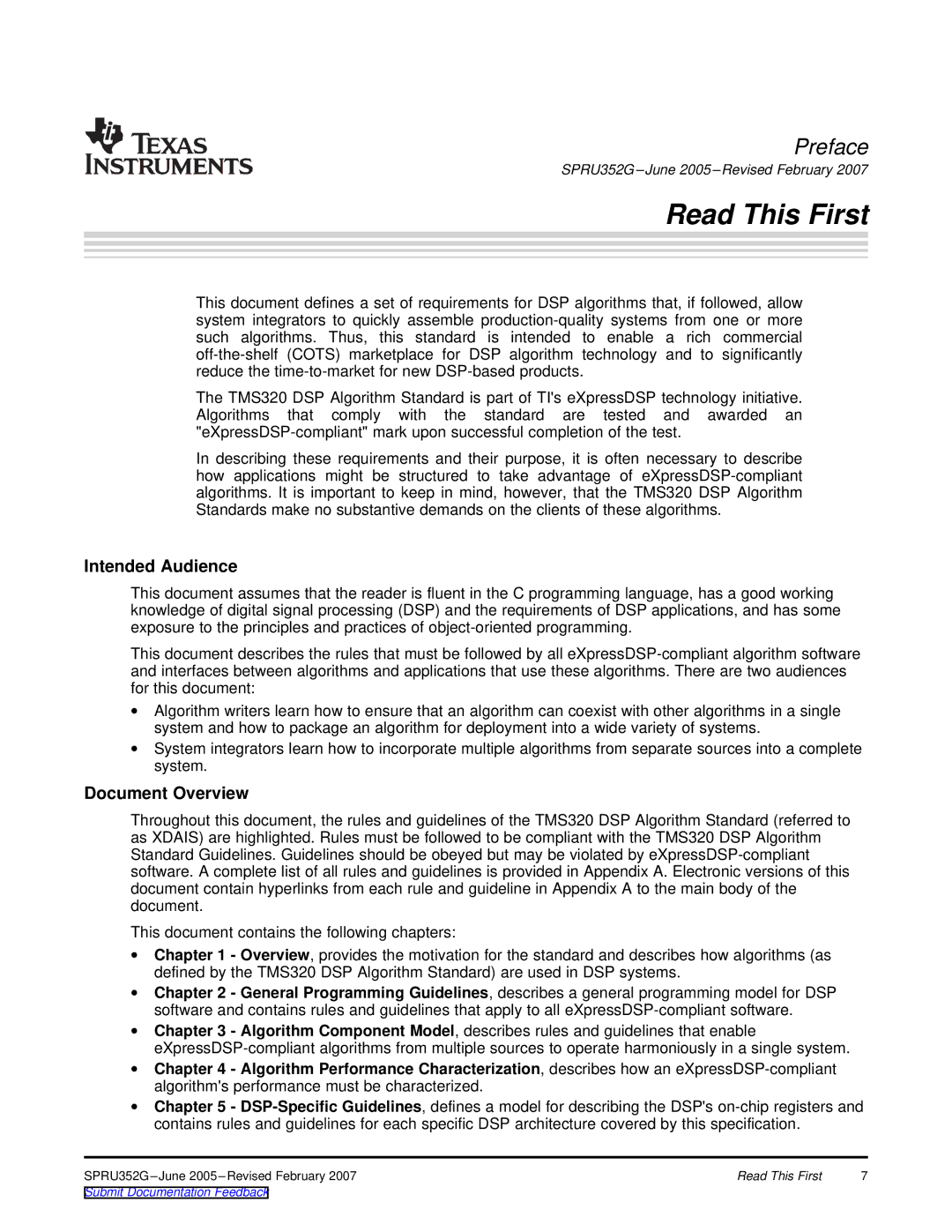
Preface
SPRU352G – June 2005 – Revised February 2007
Read This First
This document defines a set of requirements for DSP algorithms that, if followed, allow system integrators to quickly assemble
The TMS320 DSP Algorithm Standard is part of TI'seXpressDSP technology initiative. Algorithms that comply with the standard are tested and awarded an
In describing these requirements and their purpose, it is often necessary to describe how applications might be structured to take advantage of
Intended Audience
This document assumes that the reader is fluent in the C programming language, has a good working knowledge of digital signal processing (DSP) and the requirements of DSP applications, and has some exposure to the principles and practices of
This document describes the rules that must be followed by all
∙Algorithm writers learn how to ensure that an algorithm can coexist with other algorithms in a single system and how to package an algorithm for deployment into a wide variety of systems.
∙System integrators learn how to incorporate multiple algorithms from separate sources into a complete system.
Document Overview
Throughout this document, the rules and guidelines of the TMS320 DSP Algorithm Standard (referred to as XDAIS) are highlighted. Rules must be followed to be compliant with the TMS320 DSP Algorithm Standard Guidelines. Guidelines should be obeyed but may be violated by
This document contains the following chapters:
∙Chapter 1 - Overview, provides the motivation for the standard and describes how algorithms (as defined by the TMS320 DSP Algorithm Standard) are used in DSP systems.
∙Chapter 2 - General Programming Guidelines, describes a general programming model for DSP software and contains rules and guidelines that apply to all
∙Chapter 3 - Algorithm Component Model, describes rules and guidelines that enable
∙Chapter 4 - Algorithm Performance Characterization, describes how an
∙Chapter 5 -
SPRU352G | Read This First | 7 |
